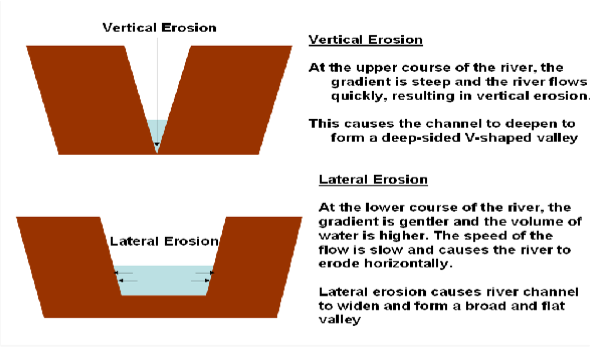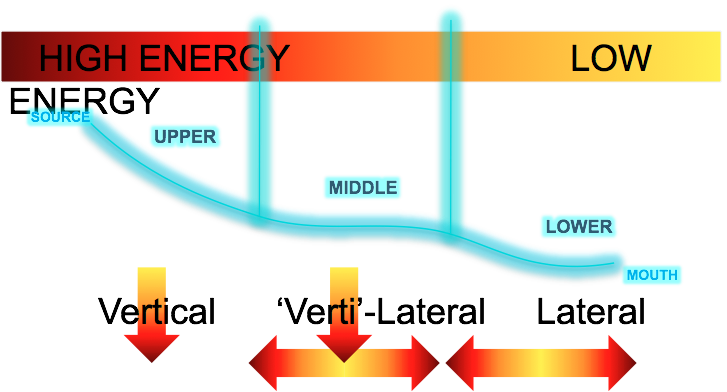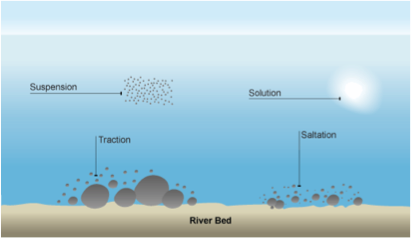Features and Processes of Rivers
Erosion
Hydraulic Action:
The force of the river against the bed and the banks can cause air to be trapped in cracks and crevices. The pressure weakens the banks and gradually wears it away. This is most effective when the water is moving fast and there is a lot of it!
Abrasion: The river load rubs against the bed and the banks of the river. This action causes some of the material to break off, by a sand papering action called abrasion, and causes the bank to collapse.
Attrition: Rocks being carried by the river smash together and break into smaller, smoother and rounder particles.
Solution: Soluble particles are dissolved into the river.
A river erodes in 2 directions – downwards or sideways. This is known as:
- Vertical Erosion (downwards)
- Lateral Erosion (sideways)
At the start of the river it is mainly vertical erosion but nearer the end of the river it is mainly lateral erosion.
Factors Affecting Erosion
- Load – how much material the river is carrying. More material = more erosion
- Velocity – the speed of the water. Faster = more erosion
- Gradient – How steep the river is. Steeper = more erosion
- Geology – The rock type. Soft rock = more erosion
- Acid levels – More acidic = more erosion
Transport
Deposition
When a river loses energy, it will drop or deposit some of the material it is carrying.
Deposition may take place when a river enters an area of shallow water, when the gradient drops or when the volume of water decreases.
Deposition is common towards the end of a river’s journey, at the mouth.
Courses of the River
In the upper course of the river erosion takes place.
In the middle course of the river transportation is the main job but some material is deposited.
In the lower course the main job of the river is deposition.
River Processes
After the river has eroded material from the bed and banks, it transports the load along the river (the river course).
Then it deposits (drops) the material:
- Erosion
- Transportation
- Deposition
- Name and describe the 4 processes of erosion and lateral and vertical erosion.
- Your answer should include: Attrition / Abrasion / Solution / Hydraulic / Action
- Name and describe the 4 processes of transportation.
- Your answer should include: Solution / Saltation / Traction / Suspension
- Where does transportation, erosion, deposition happen most in a river.
- Your answer should include: Source / Mouth


